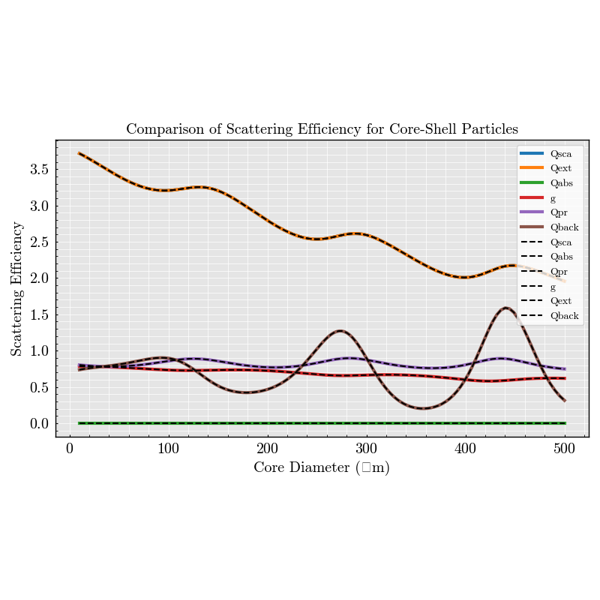Validation Examples#
This section compares PyMieSim’s results against reference implementations. It
contains scripts reproducing calculations from Bohren & Huffman as well as
cross-checks with the PyMieScatt package. Internal tests that exercise
specific parts of the library are also provided.
Contents#
bohren_huffman- examples based on figures from Absorption and Scattering of Light by Small Particles.pymiescatt- comparisons with thePyMieScattpackage.internal- small utilities checking phase functions and energy flow.
Bohren & Huffmann#
Scripts reproducing figures from the classic text.
Internal#
Tests checking phase functions and energy conservation.
PyMieScatt#
Comparison scripts using the PyMieScatt package.









